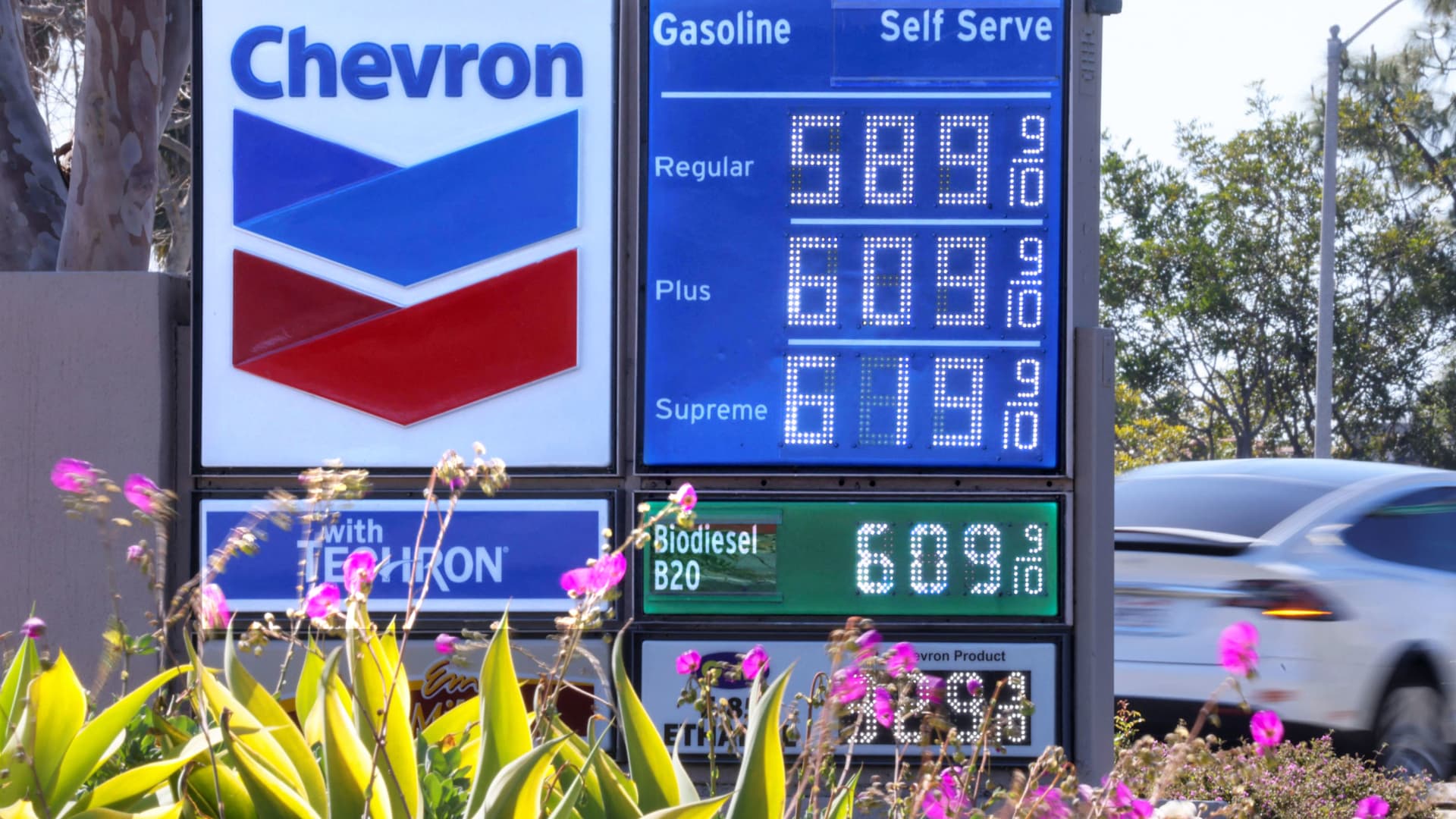For years politicians have said the booming American oil industry would make the country “energy independent.”
Indeed, the United States is the world’s largest producer of oil. That puts it two spots ahead of Russia, which shocked the world — and oil markets — by invading Ukraine. Saudi Arabia is the second-largest producer
The move sent gasoline prices skyrocketing to all-time highs.
But the United States does not import much petroleum from Russia.
Nevertheless, a shock to oil supply and demand anywhere in the world can cause a spike somewhere else. Energy independent just means the U.S. exports more than it imports — not that it is independent of the rest of the world.
“Oil is a global commodity,” said Patrick De Haan, who is head of petroleum analysis at gas price tracker GasBuddy. “We can’t fence the U.S. or take us out of that global system. Just like we’re seeing computer chip shortages — we can’t remove ourselves from that situation either. Even if we produce some supply computer chips here, that doesn’t fix what’s going on outside our borders with drastic impacts to supply and demand.”
The U.S. does have a Strategic Petroleum Reserve. About 700 million barrels are stored in underground salt caverns along the Gulf Coast. That amounts to about a one-month supply for the whole country. President Joe Biden has already authorized the release of oil from that reserve twice, but it has not made much of a difference in the long run.
Russia is one of the world’s largest oil exporters, but only about 8% of U.S. oil imports come from Russia. Russian oil accounts for about 3.36% of the 20 million barrels the U.S. uses each day. For comparison, 50% of imports come from Canada, according to the U.S. Energy Information Administration.
However, that 8% is still important in its own way. Many U.S. refineries were designed before the domestic oil boom that turned America into the world’s largest producer.
The oil which the U.S. mostly produces today tends to be lighter, sweeter crudes — meaning they tend to flow at a faster rate and contain lower levels of sulfur than many other varieties.
The trouble is that many U.S. refineries were constructed decades ago, and were thus built for the heavier, sulfur-rich crudes more common at that time. So many U.S. refineries actually perform most efficiently using heavy sour crudes imported from elsewhere.
And when oil prices spike, the U.S. cannot simply pump more crude to bring them down again. The only way to significantly boost production is to drill. That takes investment, and oil companies have been both shy to spend capital and short of personnel after the years of boom-and-bust cycles, followed by demand crashes during the coronavirus pandemic.
“We’ve got to find a way to reskill, retool, bring back those, those people back to the industry,” said Ramanan Krishnamoorti, a professor of petroleum engineering at the University of Houston. “The second, is we need to find a better way to get capital to the industry, and that will come with more regulatory certainty.”
In the meantime, drivers feel the pain at the pump, unless, of course, they drive an electric.
Watch the video to learn more.
